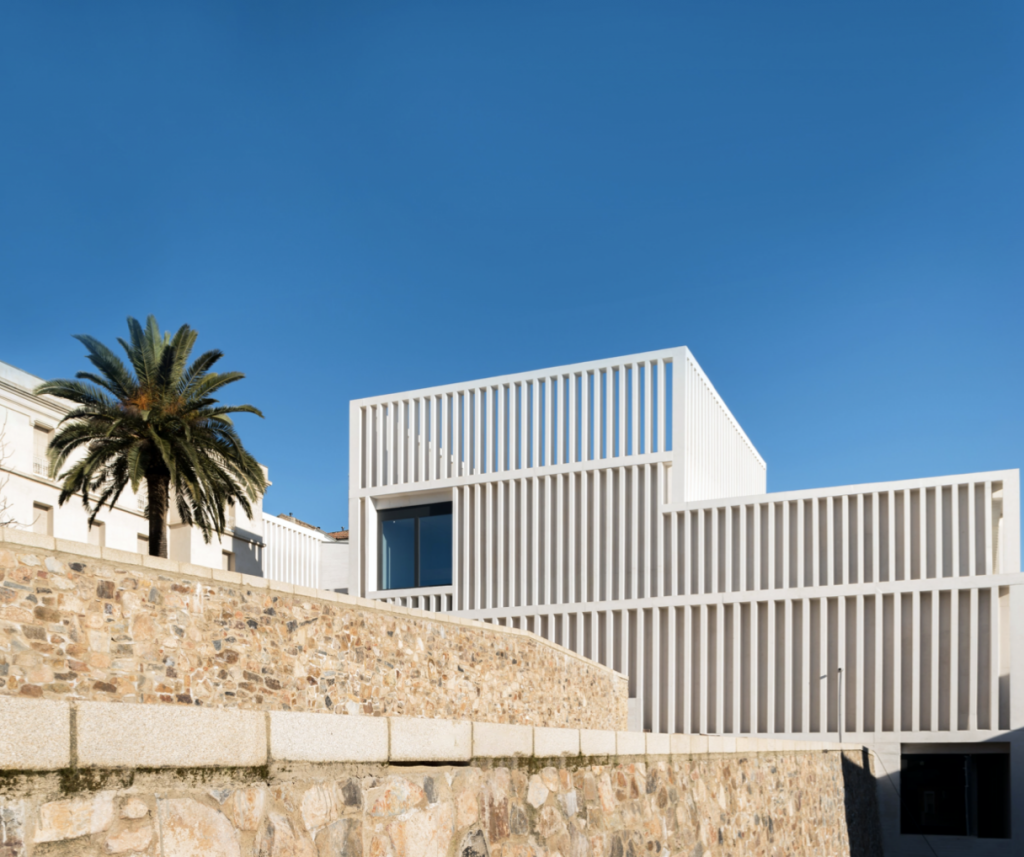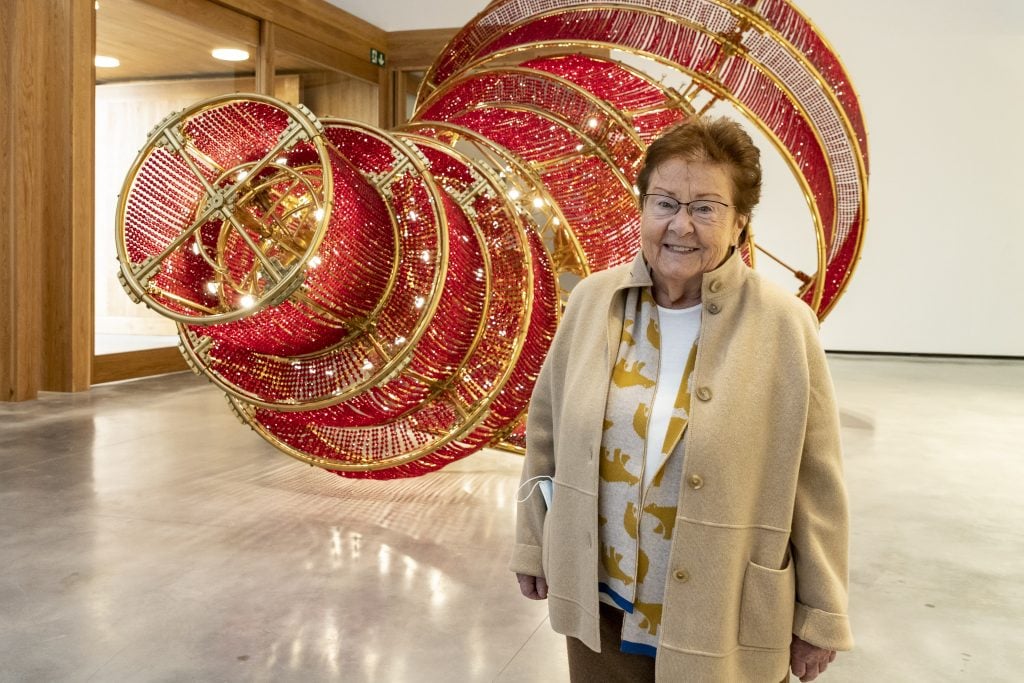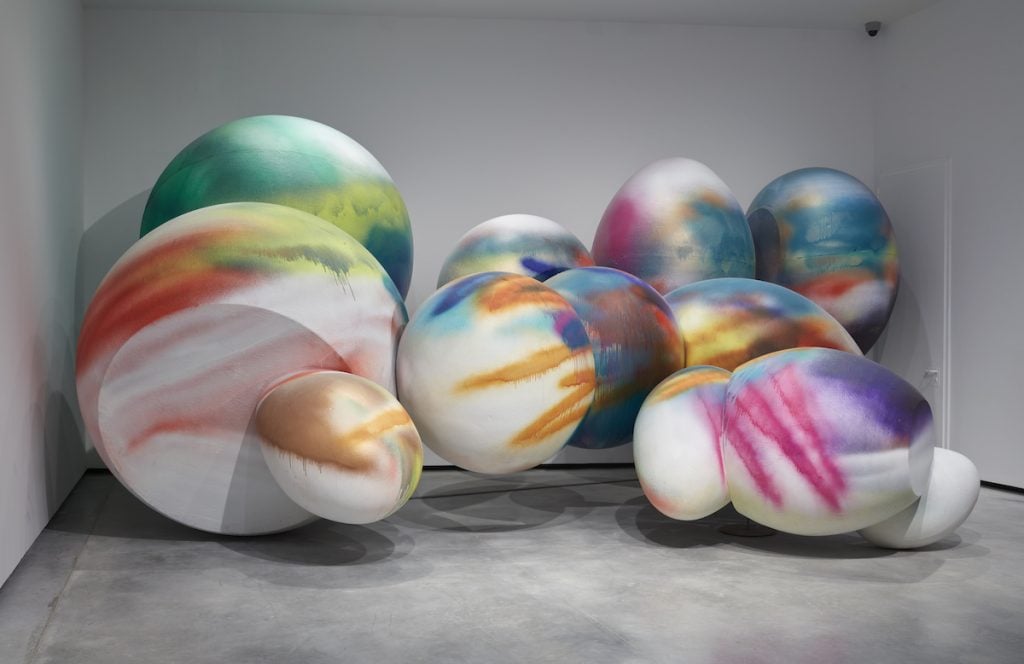People
A Wholly Revamped Museum Will Open in Spain to House the Contemporary Art Collection of Dealer Helga de Alvear
German art collector and dealer Helga de Alvear is gifting her entire collection to a Spanish region.

German art collector and dealer Helga de Alvear is gifting her entire collection to a Spanish region.

Kate Brown

This spring, a city in Spain will become a European art destination when it opens a major expansion to one of the continent’s leading collections of contemporary art.
German art collector and dealer Helga de Alvear, who is also one of the founders of the fair ARCOMadrid, has amassed a formidable collection of 3,000 contemporary artworks over four decades. She has gifted the collection—in its entirety—to the Spanish region of Extremadura and will also donate a just-completed museum in the city of Cáceres to house it.
The expanded and restored museum is set to display works by the likes of Joseph Beuys, Dan Flavin, Joseph Albers, Paul Klee, Nan Goldin, and Jenny Holzer, to name a few. All told, the collection contains work by 500 artists. A portion of the collection, around 200 works, will be unveiled when the museum reopens its doors this spring. Access to the museum will remain free to the public.

Helga de Alvear in 2021 in front of Descending Light (2007) by Ai Weiwei. Photo: Andy Solé.
“I am interested in contemporary art because it speaks to us of our time and of ourselves, because it creates and develops a language that can explain, in a new way, the world in which we happen to live and of which we often only brush the surface,” said de Alvear in a statement.
A smaller version of the museum and de Alvear’s foundation has been running on the same site since 2010. The first location for the museum, a 1913 villa, remains but is now built out by a hyper-modern, white-slated building, which was designed by Tuñón Arquitectos Studio.
Construction on the site broke ground in 2015 and cost €10 million, which was split between de Alvear and the Regional Minister of Culture, Tourism and Sports, Government of Extremadura.
“Both buildings are similar and different in dimension and shape,” architect Tuñón explained to Dezeen when the expansion was first announced. “They are complementary in terms of volume and different in terms of construction and image. But the two together constitute the new image of Cáceres.”

Faux Rocks (2006) by Katharina Grosse. © Joaquín Cortés. Helga de Alvear Museum.
A rare and well-preserved edition of Goya’s Los Caprichos aquatint, as well as etchings from the last 16th century (the museum says it considers Goya the first contemporary artist), will be on view alongside works by Louise Bourgeois, Thomas Hirschhorn, and Nan Goldin. Modern artists like Wassily Kandinsky and Pablo Picasso are also featured.
De Alvear, who was born in Germany, spent most of her life in Madrid. In 1967, de Alvear met Juana Mordó, an art dealer and prominent cultural figure in Spain. She worked at Juana Mordó gallery before taking over after Mordó died.
She then made waves in 1995 when she opened her own eponymous gallery steps from the Reina Sofía Museum, with a focus on photography, video, and installation—experimental mediums at the time. She represents artists Angela Bulloch, Thomas Demand, and Elmgreen & Dragset.